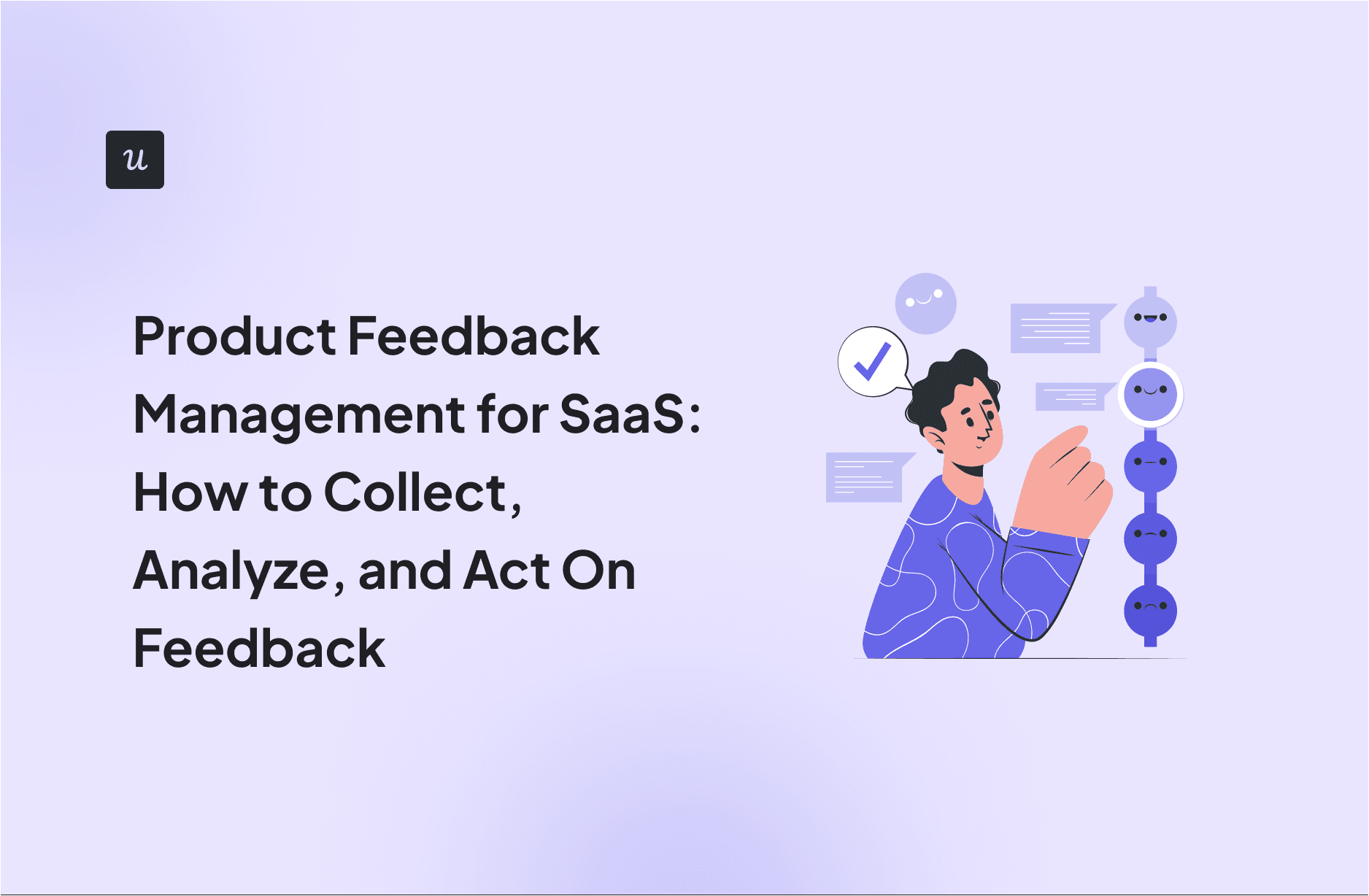
Product Feedback Management for SaaS: How to Collect, Analyze, and Act On Feedback
Try Userpilot Now
See Why 1,000+ Teams Choose Userpilot

What is product feedback management?
In simple terms, it’s the process in which you collect, organize, analyze, and then act on customer feedback. It also involves closing the feedback loop by following up with customers after they share their feedback.
This feedback helps you understand the experiences of your customers when they use your product. Acting on routinely highlighted issues can help improve your product and boost customer satisfaction.
How to collect product feedback
Some customers may leave feedback for your product by themselves in the form of reviews, but if you want to collect feedback en-masse, you’ve to reach out to your customers. Here are the various tactics you can employ.
Methods to gather qualitative product feedback
Qualitative feedback helps you understand user perceptions and opinions with ease to discover the “why” behind their experiences. There are several ways of collecting product feedback from customers (some of which require feedback software). Here are the most common ones:
- In-app survey – You can conduct surveys within your SaaS app to gather user feedback. Give users the opportunity to write their opinions and pain points so you can understand them better.
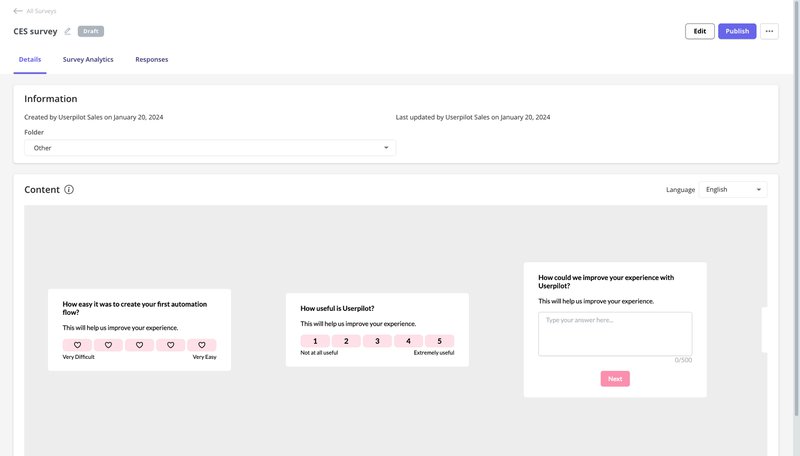
- Customer interviews – Connect with individual users and conduct interviews to get in-depth feedback and gather new feature requests.
- Focus groups – You can create focus groups by choosing customers with diverse demography. Then, ask them about their pain points, opinions, and requirements from your product and gather feedback related to it.
- Reviews – You could reach out to users and ask them to leave their reviews. You could also collect this product feedback within your app by using feedback software, and incentivize them for this, too.
Methods to gather quantitative product feedback
Unlike qualitative feedback, quantitative feedback focuses on numbers and involves lots of analytics. Here are the best ways of collecting it.
- Surveys – You can conduct in-app surveys, like NPS (Net Promoter Score), CES (Customer Effort Score), and CSAT (Customer Satisfaction) to understand customer loyalty, product’s ease of use, and satisfaction levels.

- Behavioral data – User behavior can tell you a lot about their experiences and pain points. You can collect customer feedback by understanding their behavior and analyzing related product metrics to gain valuable insights. Use reports like path analysis, trend analysis, and funnel analysis to understand your users better.
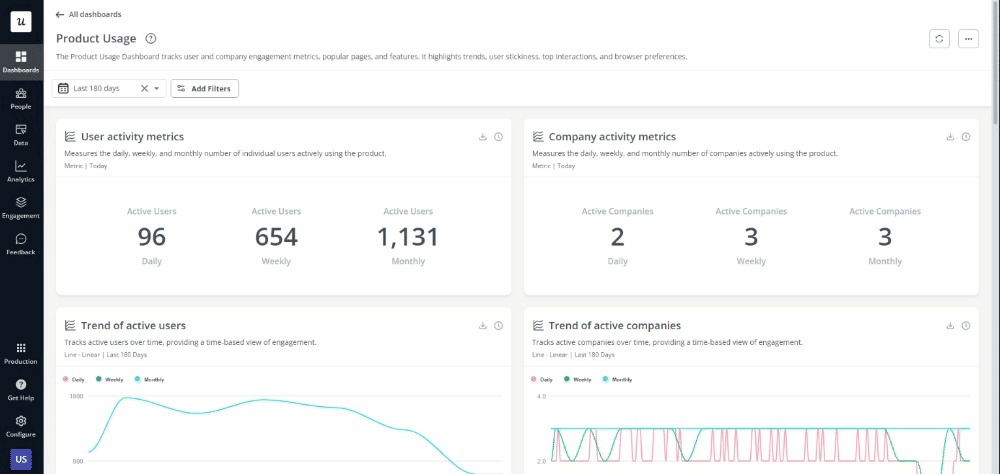
- A/B testing – You can use it to understand which variant of your product features resonates better with your users. Analyze the variants and use this customer feedback data to make better product development decisions.
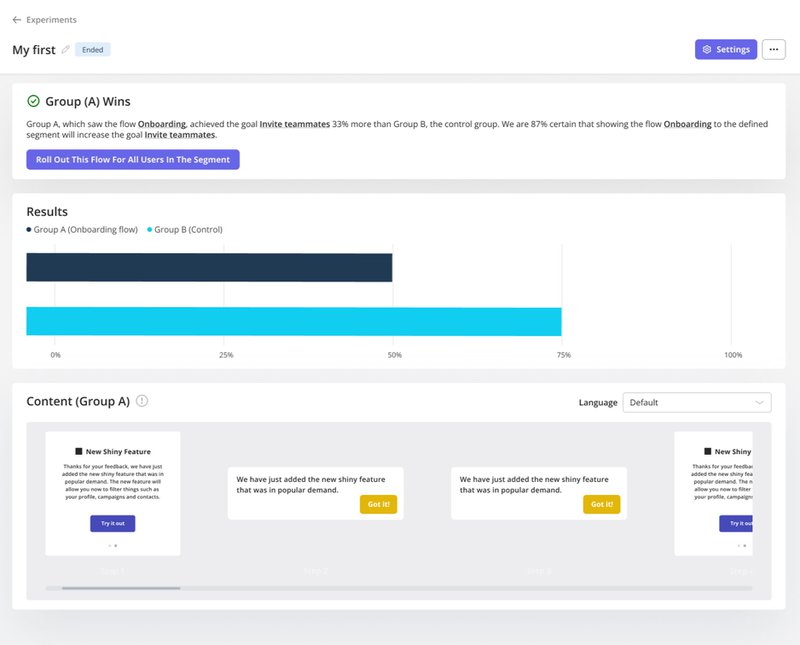
How to analyze product feedback
Once you’ve collected feedback, you need to organize it using customer feedback management software and then analyze it to gain actionable insights for future product decisions.
Categorize feedback to spot trends and patterns
To identify trends, you must first divide your feedback into various categories. In case of Userpilot, you can use NPS response tags to find common issues that are faced by detractors.
Using this product feedback management tool, product managers can track all the responses of your customers and filter them using NPS response tags to analyze your NPS results. It’s also possible to find the most prevalent tags for each group—promoters, detractors, and passives. This can help you determine how to improve your product for each of these groups.
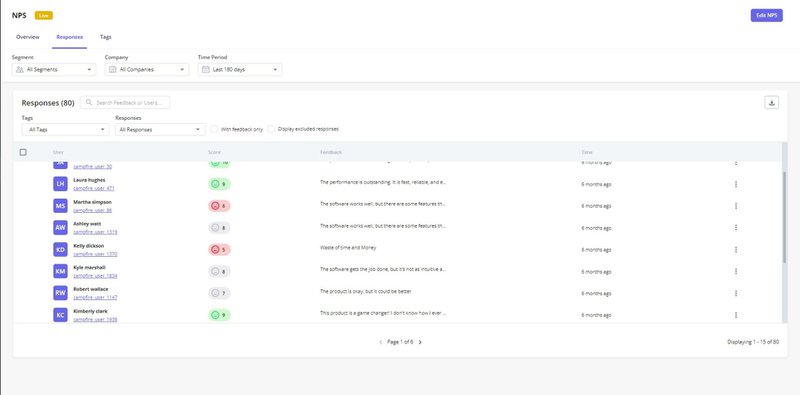
It’s also a good idea to conduct these NPS surveys regularly to understand how the trends change over time. This way, you can keep up with the changing user behavior.
Leverage different research frameworks to organize product feedback data
You can employ several research frameworks to group your product feedback data. This can help you categorize it better for analysis.
Some of the frameworks you can use include:
- JTBD (Jobs to Be Done) – This framework is based on the thought that customers use products only to get their jobs done. So, to build a product that customers want, you’ve to keep those goals in mind. You can group your customer feedback based on these goals to find what your product lacks in each aspect.
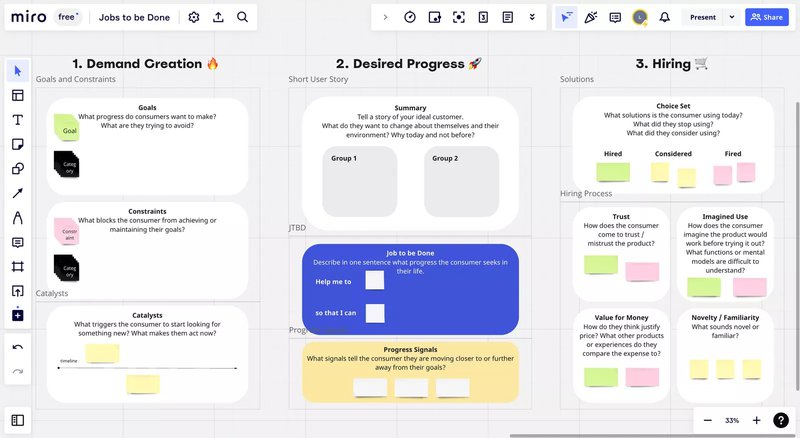
- User persona – You can segment your users based on their personas and accordingly group their feedback as well. This can help you create solutions that are specifically targeted to these segments. You can use Userpilot’s user persona survey templates to collect feedback from each segment.
- RICE (Reach, Impact, Confidence, and Effort) – This framework relies on how many users each feedback item will affect, how much it will impact their goals, how confident you are about it, and how much time it would take to implement it. This can help you prioritize product feedback that can make the greatest impact on customer experience.
Use a survey analytics tool for data visualization
Once you’ve got your product feedback survey data in place, you need to start analyzing it to derive insights for product improvements. That’s where a survey analytics tool steps in.
With Userpilot, you don’t just get in-app survey features but also have access to detailed analytics related to them. For instance, once you launch an NPS survey for your SaaS platform, you can start seeing its metrics like:
- Average NPS score.
- Response rates.
- Number and percentages of promoters, detractors, and passives.
You also get to see the trends in product feedback survey responses over a selected time period to understand if your changes are yielding results.
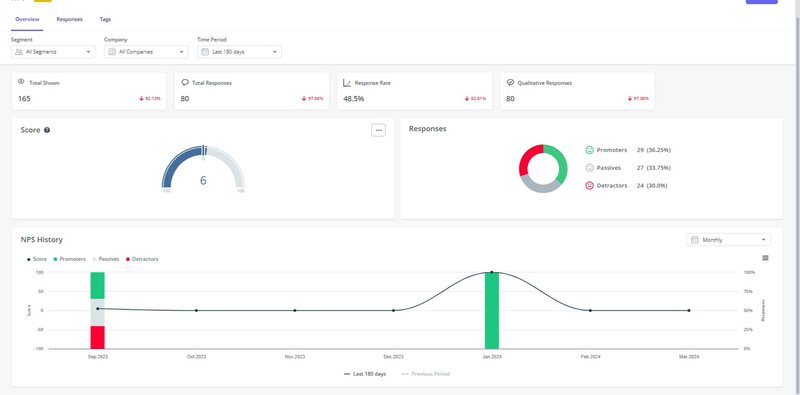
Utilize AI to generate insights from product feedback
Analyzing customer feedback manually can be a time-consuming process. This could lead to longer product development cycles and, as a result, delayed releases of new or improved features.
However, this process can be streamlined to a great extent with the use of AI. Armed with the power of NLP (Natural Language Processing), you can use AI-powered tools to discover patterns and trends in your product data, whether it’s user onboarding or feedback.
These tools can help you automatically categorize your product feedback using tags, much like NPS response tagging on Userpilot (which is manual). This way, you can analyze the feedback data with ease and know the most common issues or requirements of your users.
Additionally, machine learning algorithms can help you with feedback data analysis. They can show you the topics being frequently addressed and how they trend over a given time period. It can give you actionable insights that you can then work on to improve your product.
In addition, AI-powered tools can give you insight into user sentiment over time, enabling you to understand if your actions are leading to better user experiences or not.
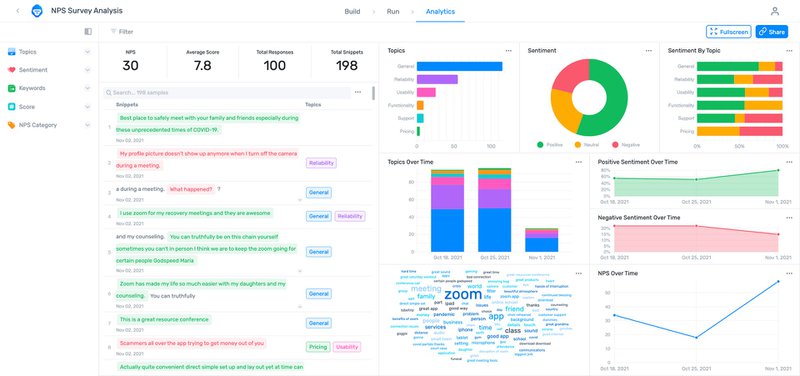
How to close the product feedback loop
Your job doesn’t end when you collect feedback and act on it. Instead, you have to actively work to close your product feedback loop. In a nutshell, it requires you to follow-up with customers after you’ve acted on their concerns. Here are the various ways you can close the feedback loop.
Deliver contextual help using in-app guidance
Identify users with similar usability issues based on the analysis of the collected feedback. Next, create segments for these users so you can provide solutions that are specifically targeted toward them.
Contextual help like tooltips and walkthroughs can come in handy for such assistance. For instance, tooltips can give additional information regarding a particular feature. Similarly, product walkthroughs can handhold users through the feature, so they get the hang of it.
Such in-app guidance can level up your user experience as contextual support is non-intrusive and useful at the same time.
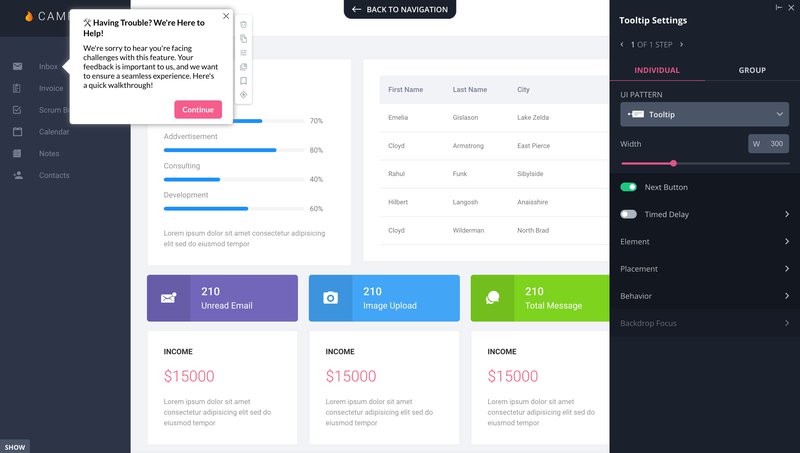
Improve help documents for better support
Once you’ve identified some common issues highlighted in product feedback, you can start working on sprucing up related resources in your knowledge base.
If you’ve already got some help documents related to those issues, update them to provide more targeted advice. And if your in-app resource center lacks documents on a particular topic, create those from scratch and add those to the onboarding flow using checklists. The idea is to make these resources easily accessible for your users to improve feature adoption.
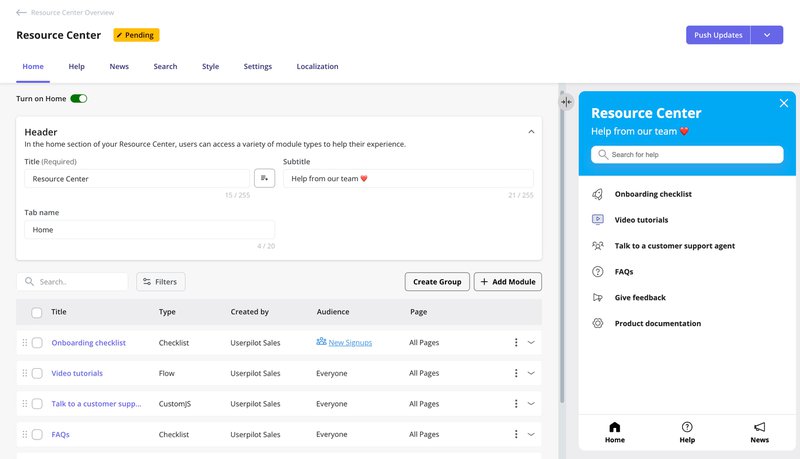
Leverage in-app messages to communicate updates and improvements
When you launch new features or update them, you need to close the product feedback loop by informing your users about them. And one of the best ways of going about it is through in-app messages. You can use modals and tooltips to announce new product updates.
Modals can be a great option for announcing updates that should grab the users’ attention. You can either launch them for the entire user base or customize them for each segment to send out targeted messages.
But if an update isn’t as important, you could choose non-intrusive forms of in-app messages like tooltips for product announcements.
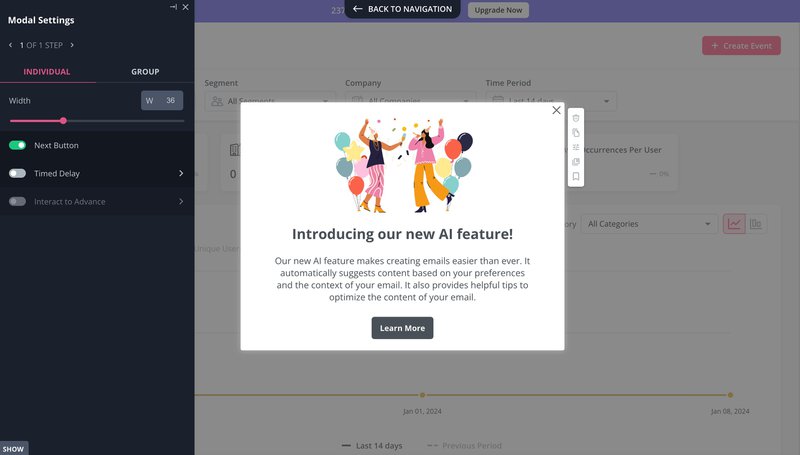
Personalize follow-ups to enhance customer satisfaction
Irrespective of the communication channels you use to follow up with your customers, you must personalize your interactions. Bring their product feedback into the mix and explain how you’ve made changes based on their suggestions.
The idea is to make your customers feel important and heard. To take it a step further, you can also personalize the communication channels. Analyze your user base to see which channels they use most frequently to connect with you and reach out to them on those to elevate their satisfaction levels.
Reward loyal customers to encourage product reviews
While it’s crucial to look into the issues and feature requests from detractors in your NPS surveys, you must not ignore your promoters. Even if they don’t have any pain points or feature requests, you could be missing out on their reviews.
You can reach out to promoters through NPS follow-up questions and ask them to write a review for your product. To increase their chances of writing reviews, you could sweeten the deal and throw in some incentives. These could be in the form of free upgrades, early access to new features, or some other freebie.
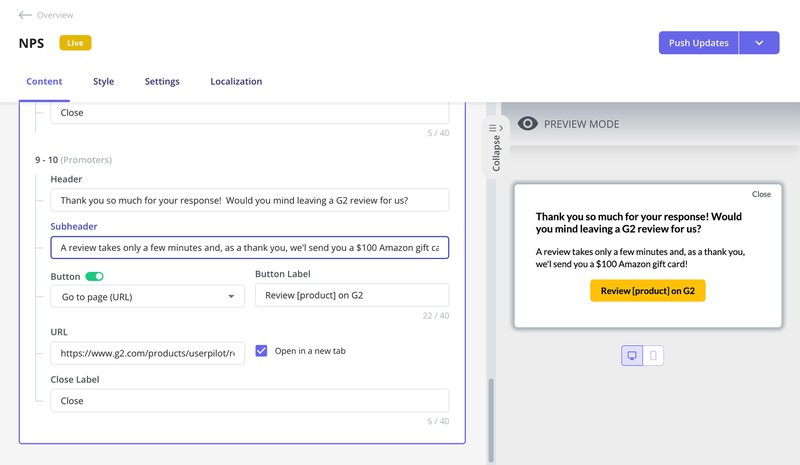
Best product feedback management tools
Let’s now take a look at some of the best tools to collect, manage, and act on product feedback.
Userpilot: Best in-app feedback management tool
If you’re looking to collect and organize in-app feedback without any technical skills, Userpilot is the best product feedback tool for you.
It offers a wide range of options for collecting customer feedback, including NPS, CES, and CSAT surveys. You can also collect qualitative feedback through surveys.
The best part here is that you get a diverse template library and advanced condition settings to target your in-app surveys and make them contextually relevant. You also get a staging environment for conducting pre-release tests.
And that’s not all. Userpilot also provides advanced survey analytics, complete with:
- User sentiment analysis based on answers to their surveys.
- Detailed analytics of surveys with a variety of filters to drill down into the information.
- NPS response tags for finding common feedback points.
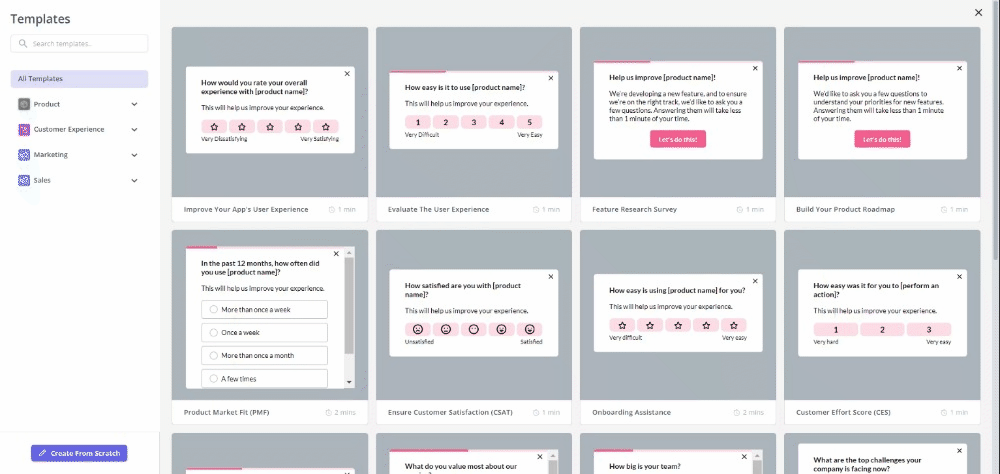
Additionally, Userpilot provides product analytics to help you discover quantitative feedback based on user behavior. It offers:
- No-code event tracking and event autocapture.
- Variety of pre-defined dashboards and custom ones for tracking product metrics.
- Trend, funnel, path, and retention analysis for understanding the impact of your actions.
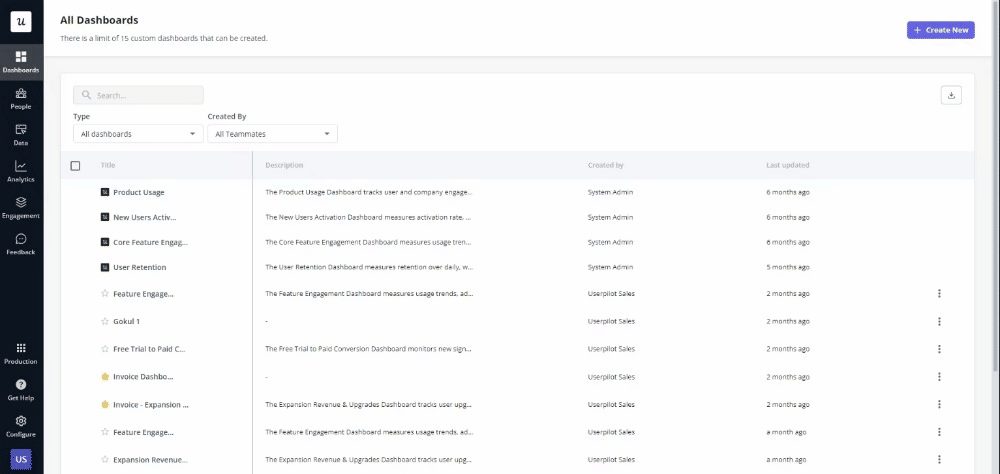
You can also close the product feedback loop using Userpilot’s tooltips, modals, and in-app resource center features.
Jira: Best tool for managing feature requests
This project management tool is perfect for collecting and managing new feature requests and product updates. Once you’ve collected feedback from your customers and identified the most common requests, you can add them to Jira’s boards.
It allows you to add labels to each feature request and give it greater context. Additionally, product managers can vote on behalf of your customers on Jira to prioritize features that need to be developed first.
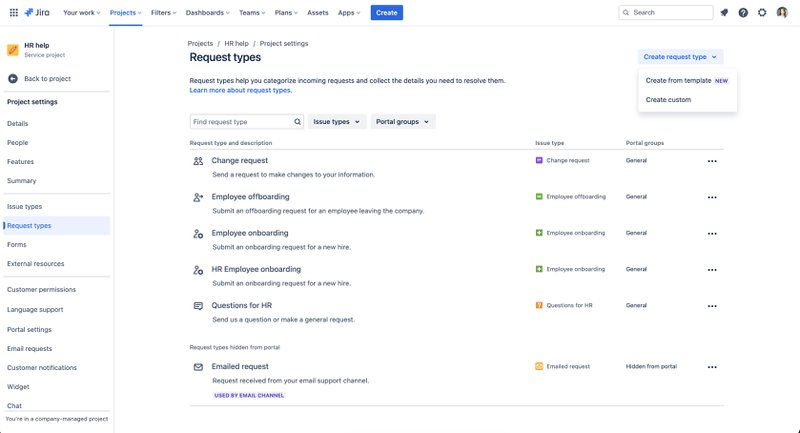
Usersnap: Best bug and issue tracking tool
User feedback may not always be related to new feature requests or things your product lacks. Sometimes, their issues could stem from bugs in your product, which could be frustrating for users. When you identify such issues, you can use Usersnap to ask users to share details about those bugs.
Product managers can also track the bugs and issues on Usersnap, prioritize them, and assign them to the right team members to resolve those tickets. This way, you can push new updates out faster.
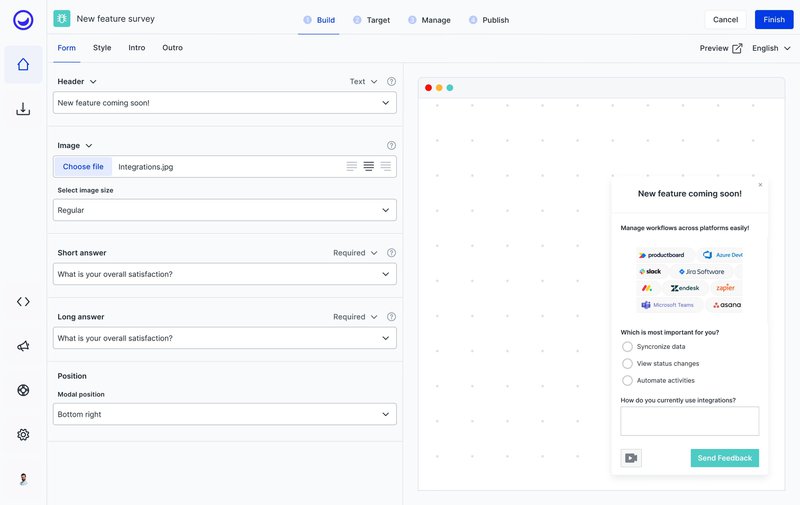
Conclusion
Collecting and working on user feedback is an important part of the product development process. It helps elevate your user experience and boosts retention. The right product feedback management tool can make a great difference here.
Userpilot enables you to collect, manage, and act on product feedback without technical skills. Book your demo now to see it in action.








